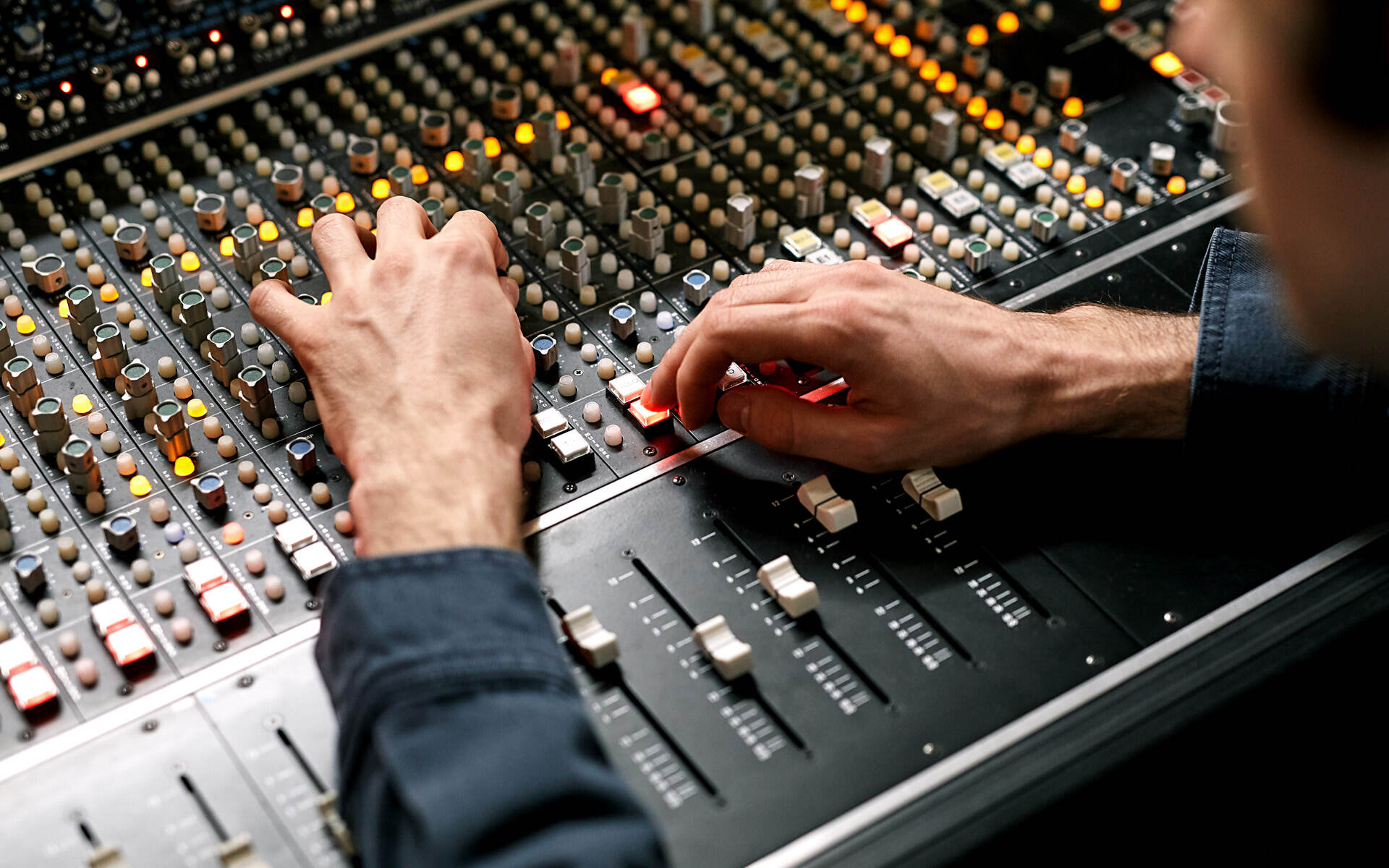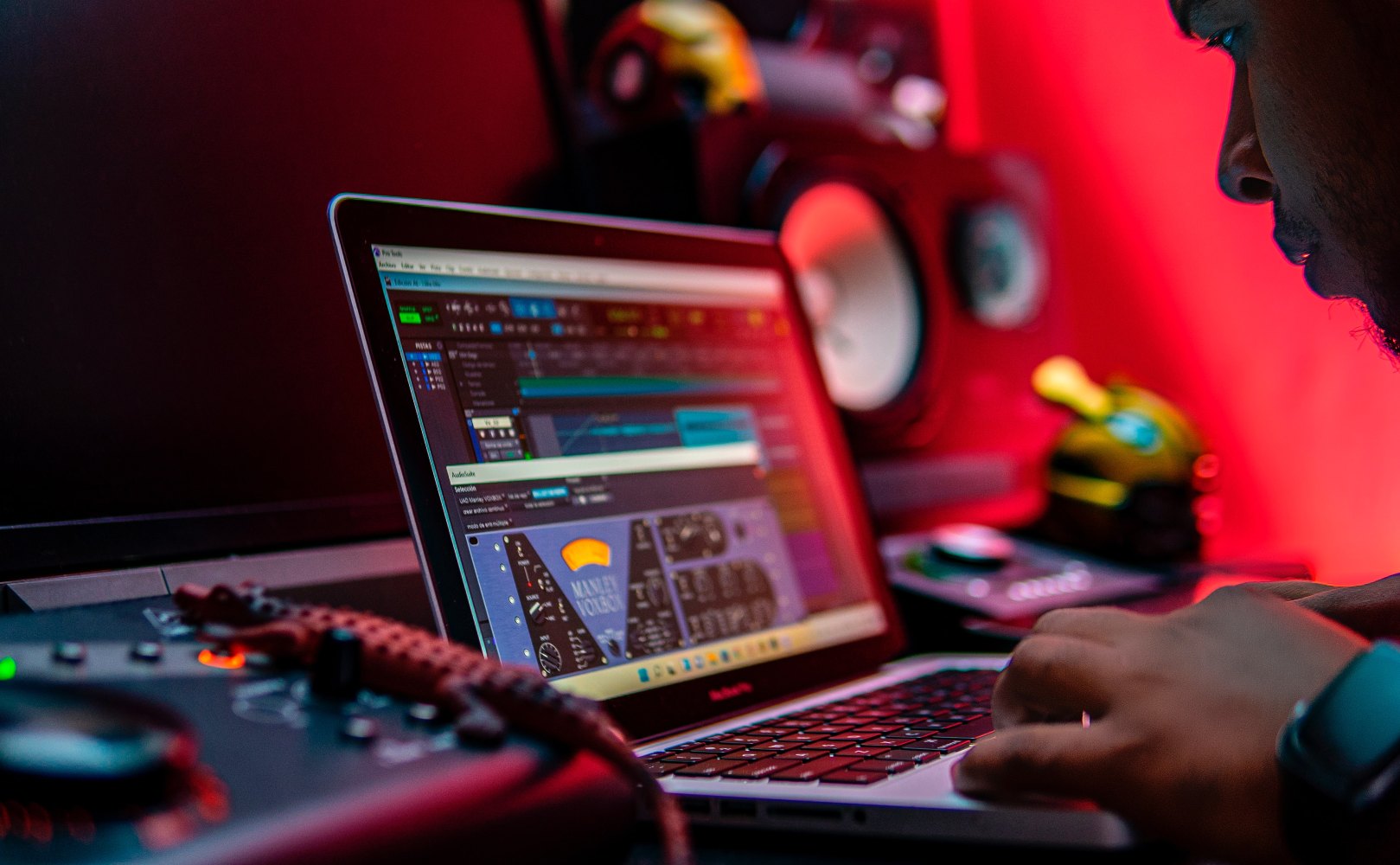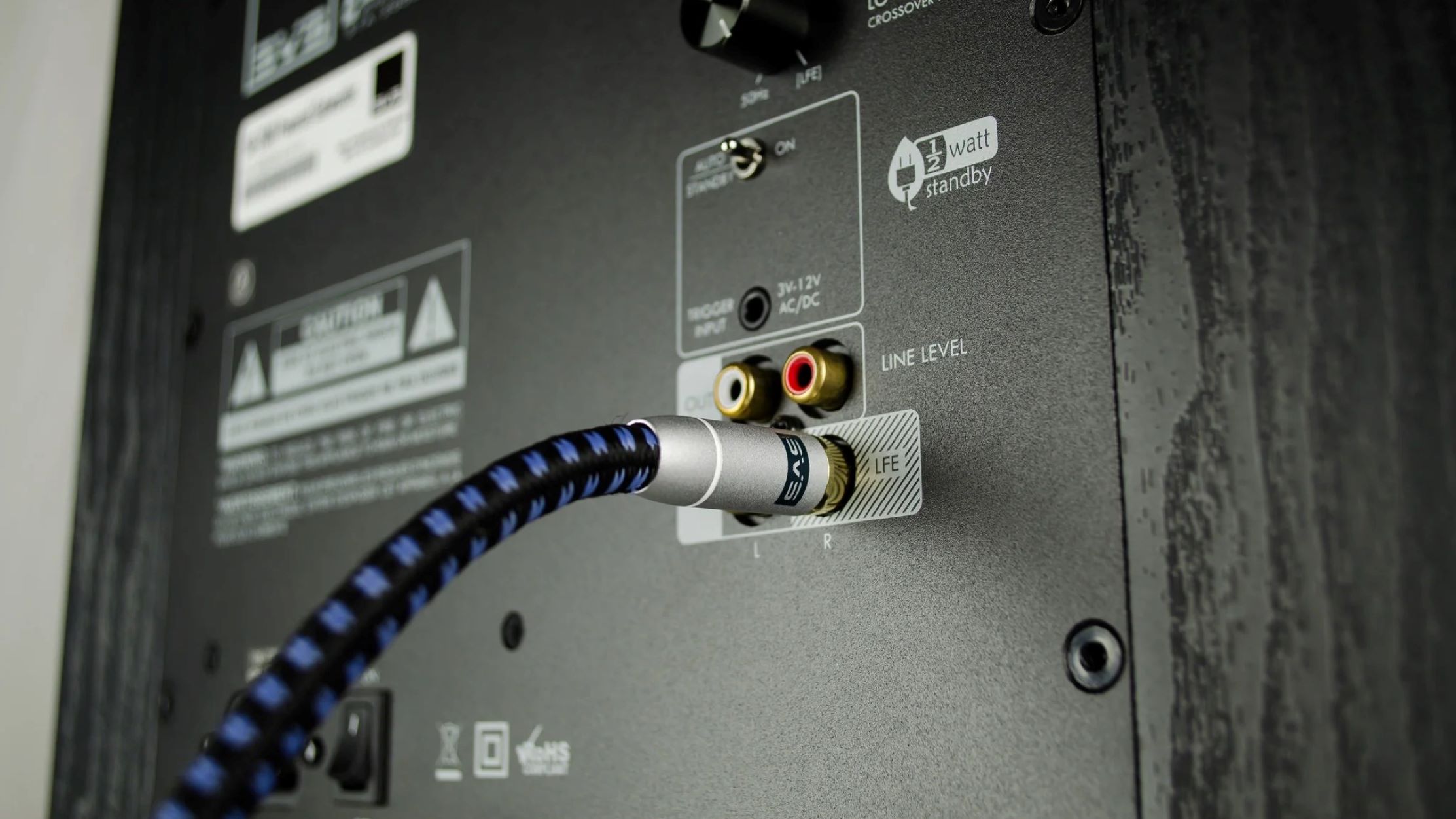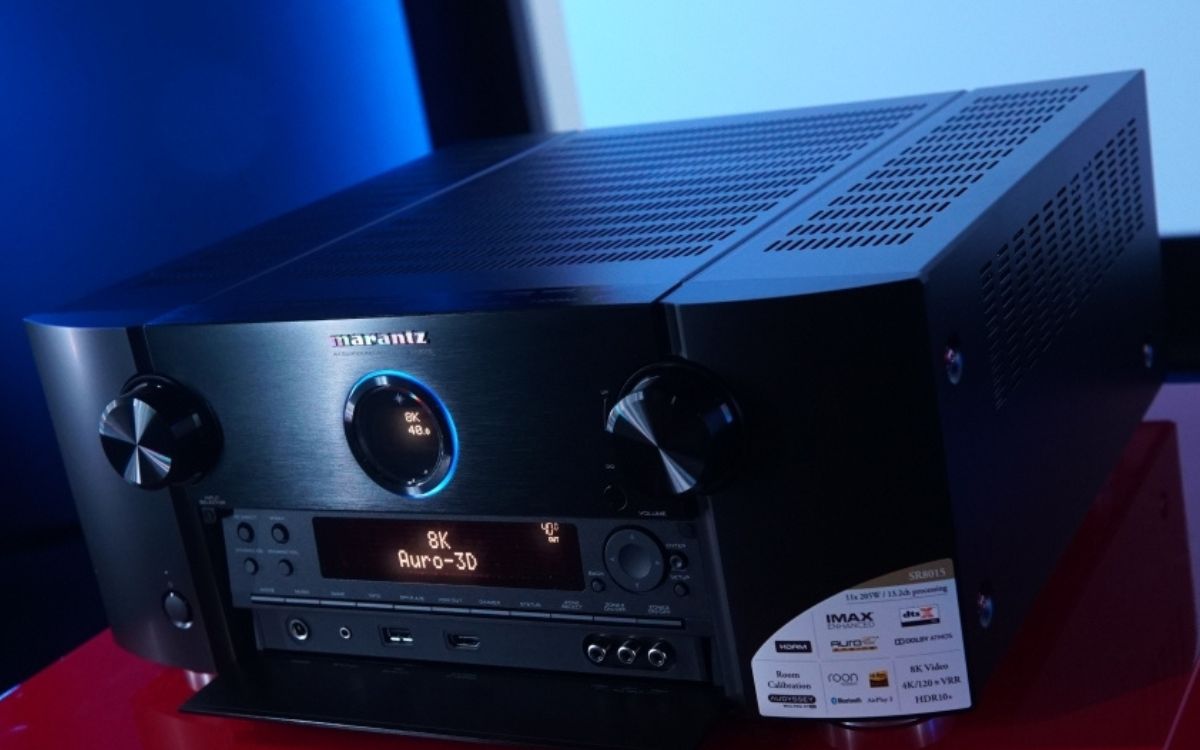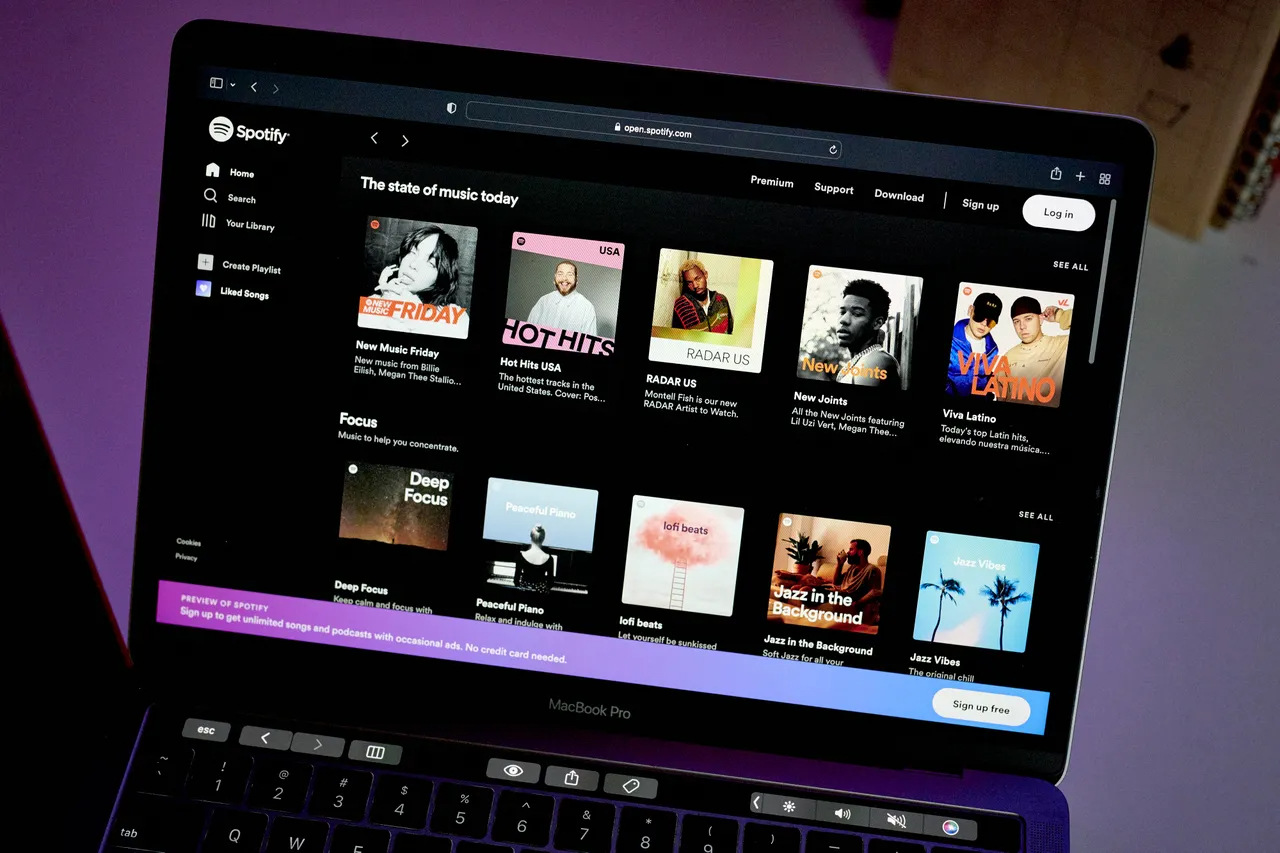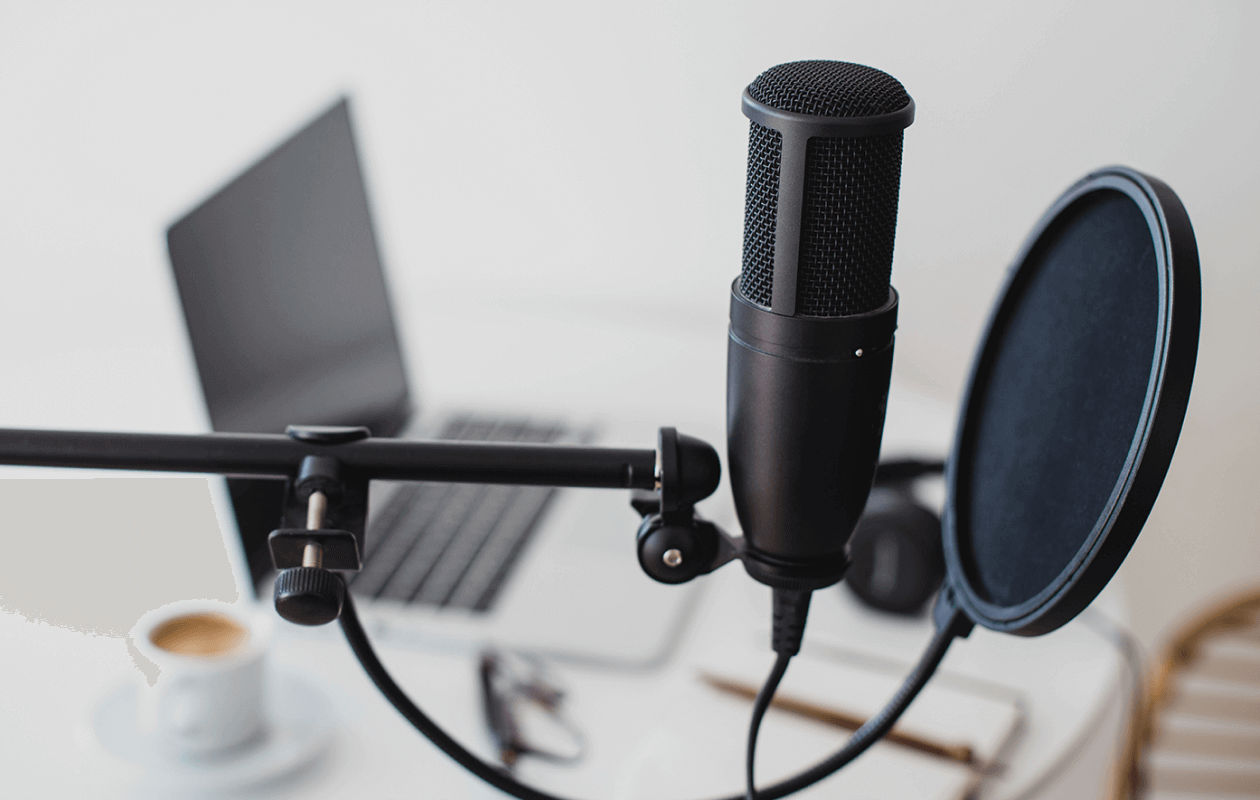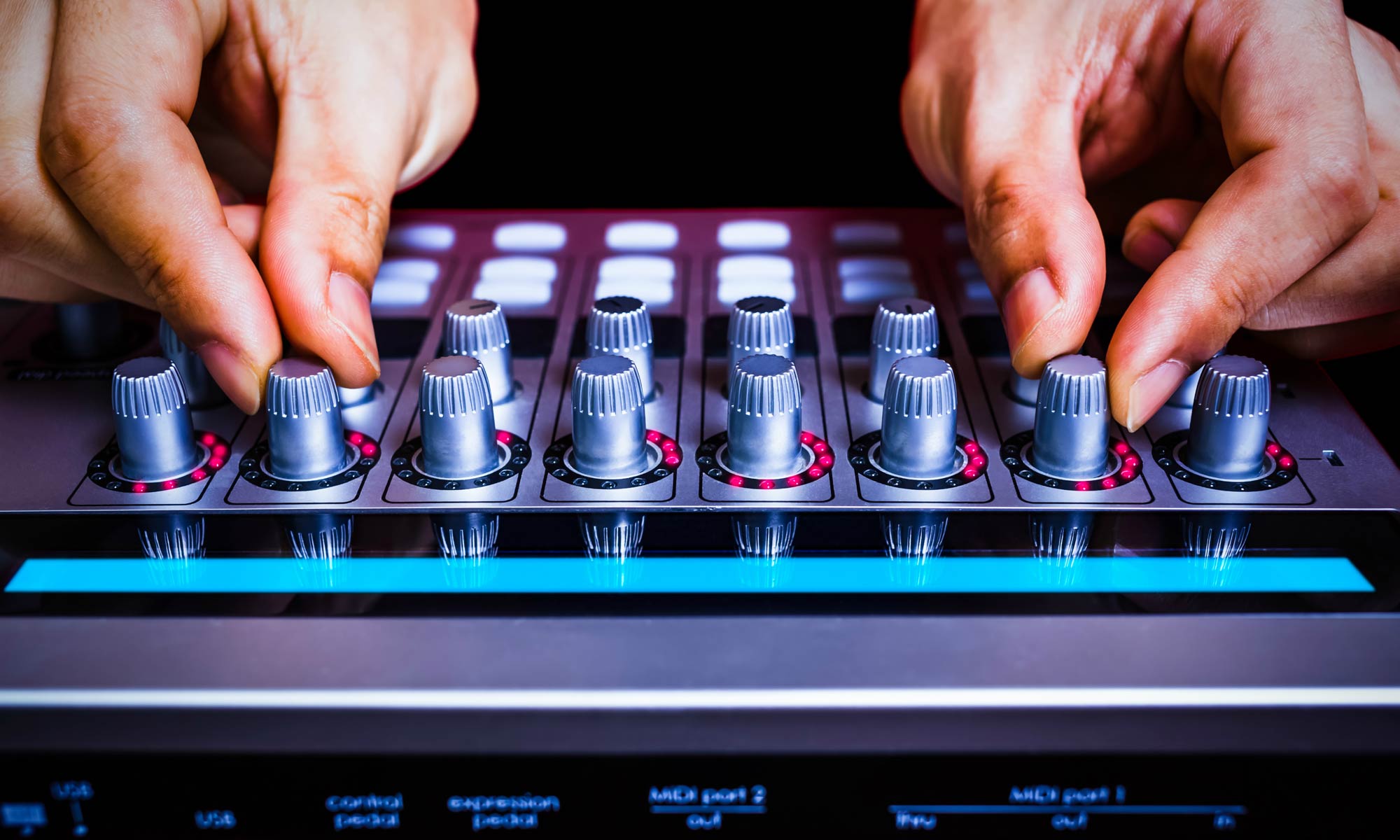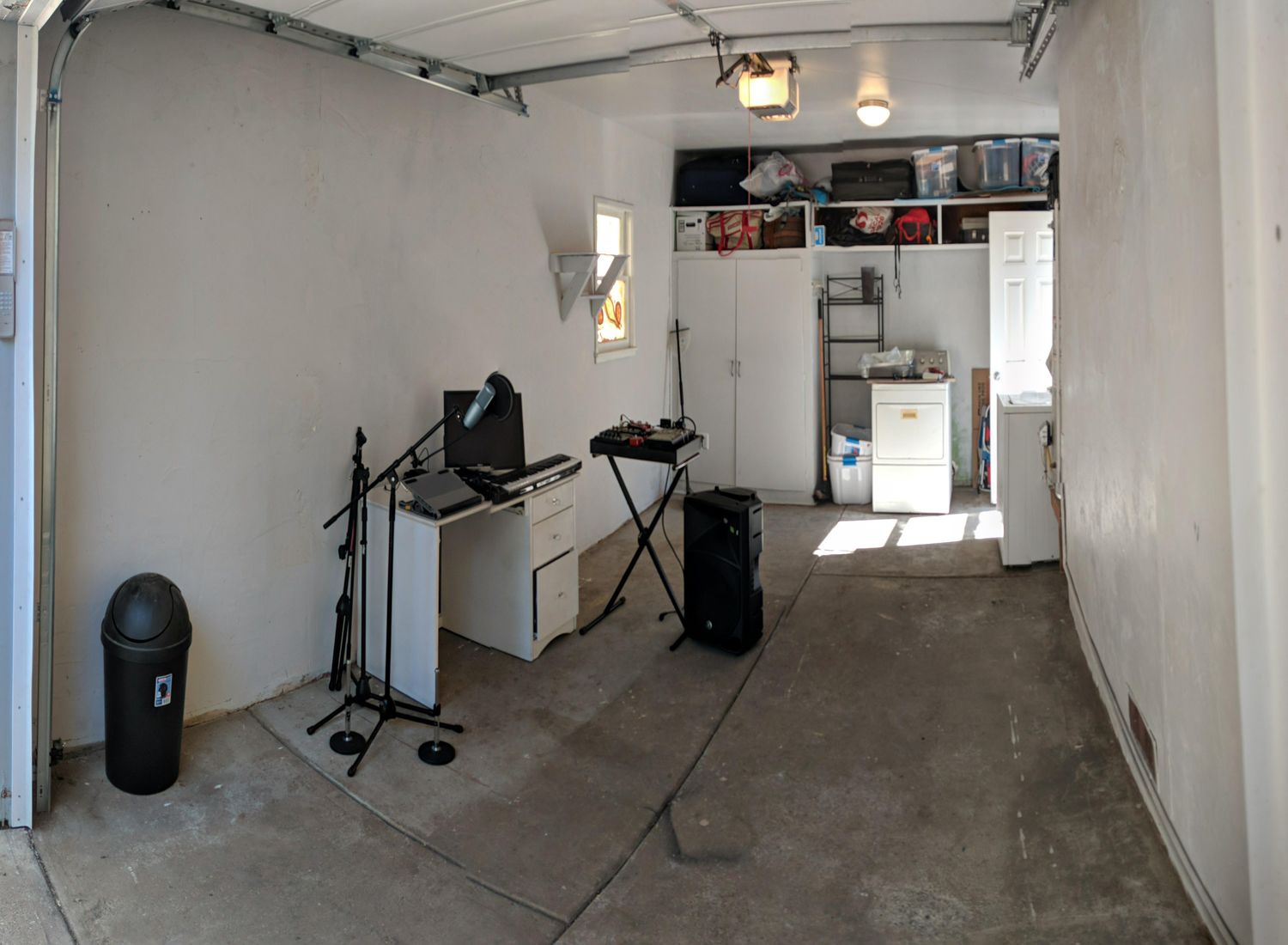Home>Events & Info>Podcast>What Do I Need To Make A Podcast
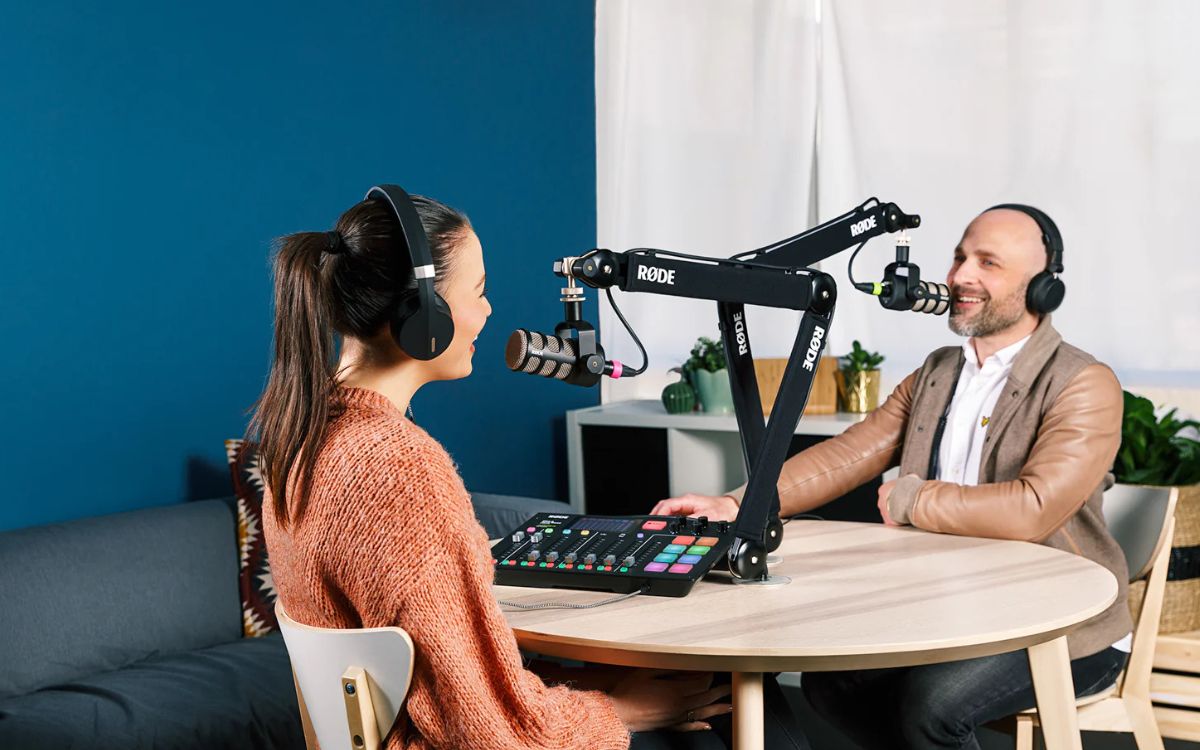

Podcast
What Do I Need To Make A Podcast
Modified: February 18, 2024
Learn what you need to make a podcast, from equipment to software. Start your own podcast today and reach a new audience!
(Many of the links in this article redirect to a specific reviewed product. Your purchase of these products through affiliate links helps to generate commission for AudioLover.com, at no extra cost. Learn more)
Table of Contents
Introduction
Welcome to the exciting world of podcasting! Whether you are a seasoned professional or just starting out, creating a successful podcast requires the right tools and equipment. In this article, we will discuss everything you need to make a podcast, from microphones to hosting platforms. So, let’s dive in!
Podcasting has rapidly gained popularity as a medium for sharing information, entertainment, and storytelling. It allows individuals and businesses alike to reach a wide audience and connect with listeners on a more personal level. However, in order to create a high-quality podcast that stands out from the competition, you need the right equipment and software.
While some podcasters prefer to keep it simple, using nothing more than their smartphone and earphones, if you want to take your podcast to the next level, investing in the right gear is essential. Having professional-grade equipment can greatly improve the audio quality and overall listening experience for your audience.
In the following sections, we will explore the essential items you need to kickstart your podcasting journey. From microphones and headphones to editing software and hosting platforms, each component plays a crucial role in delivering a polished and professional podcast.
So, whether you are planning to launch an interview-style podcast, a solo show, or a narrative storytelling series, let’s look at the must-have tools that will help you make a podcast that captivates and engages your audience.
Microphone
When it comes to podcasting, the microphone is the most essential piece of equipment. A high-quality microphone can make a significant difference in the sound clarity and professionalism of your podcast. While there are various types of microphones available, the two most common options for podcasting are dynamic microphones and condenser microphones.
Dynamic microphones are known for their durability, versatility, and ability to eliminate background noise. They are a popular choice for podcasters who record in environments with less-than-ideal acoustics or in noisy surroundings. Some popular dynamic microphones used in podcasting include the Shure SM58 and the Audio-Technica ATR2100x.
On the other hand, condenser microphones are highly sensitive and capture more detail in vocals and other sounds. They are ideal for recording in a controlled environment with good acoustics, such as a dedicated recording studio or a sound-treated room. Popular condenser microphones for podcasting include the Audio-Technica AT2020 and the Rode NT1.
When selecting a microphone, it is important to consider your budget, recording environment, and personal preferences. Additionally, investing in a microphone arm or stand can help improve sound quality by reducing handling noise and vibrations.
Ultimately, the microphone you choose will depend on your specific needs and preferences. If you are just starting out or have a limited budget, there are plenty of affordable microphones that deliver excellent sound quality. As your podcast grows and you gain more experience, you can always upgrade your microphone to further enhance the audio quality.
Remember, the microphone you choose will have a lasting impact on your podcast’s sound, so take the time to research and test different options to find the one that best suits your voice and recording environment. With a high-quality microphone, your podcast will sound professional and captivate your audience right from the start.
Headphones
When it comes to podcasting, a good pair of headphones is just as important as a high-quality microphone. Headphones allow you to monitor your audio and ensure it sounds clear and balanced, catching any issues or background noise that may have been missed during recording.
There are different types of headphones available, each with its own set of advantages and considerations. Closed-back headphones are a popular choice for podcasters as they provide excellent sound isolation, preventing sound leakage and reducing background noise. They are particularly useful for recording in noisy environments or when working with multiple hosts or guests.
Open-back headphones, on the other hand, provide a more natural and spacious sound reproduction. They allow some sound leakage, so they may not be ideal for recording in a noisy environment. However, many podcasters prefer them for editing and post-production, as they deliver a more accurate representation of the audio.
When selecting headphones, look for those that offer a comfortable fit, as you may be wearing them for extended periods of time during recording and editing sessions. Adjustable headbands, cushioned ear cups, and lightweight designs can all contribute to a more comfortable listening experience.
It’s also worth considering headphones with a detachable cable, as this can be convenient for storage and replacement if the cable gets damaged. Additionally, headphones with a frequency response that covers the full range of human hearing (20Hz to 20kHz) are ideal for accurately monitoring your podcast’s audio.
Remember, the purpose of using headphones during podcasting is to ensure your audio quality is top-notch. They allow you to hear and identify any imperfections, such as background noise, echo, or audio levels that need adjustment. By monitoring your audio through headphones, you can make necessary edits and improvements to deliver a polished and professional podcast.
Investing in a reliable pair of headphones is an essential step in creating a high-quality podcast. They not only help you catch potential audio issues but also enable you to fully immerse yourself in the listening experience, ensuring that your podcast meets the highest standards of quality.
Audio Recording Software
Once you have your microphone and headphones ready, the next step is to choose the right audio recording software for your podcast. Audio recording software, also known as digital audio workstations (DAWs), allows you to record, edit, and mix your podcast episodes.
There are several options available, ranging from free to premium software. Some popular choices among podcasters include Audacity (free), Adobe Audition, GarageBand (for Mac users), and Reaper. These software options offer a wide range of features that can help enhance the quality and production value of your podcast.
When selecting audio recording software, consider the features that are important to you and the level of control and customization you require. Look for software that allows multi-track recording, so you can record different voices or audio sources separately for better control during editing.
Additionally, look for software that offers editing tools, such as noise reduction, EQ, compression, and audio effects. These tools can help you clean up your audio, improve clarity, and create a more professional-sounding podcast.
If you are just starting out and don’t have a budget for premium software, Audacity is a popular choice. It’s a free, open-source software that offers a wide range of features for basic podcast recording and editing. While it may not have all the advanced features of premium software, Audacity is a great option for beginners and those on a tight budget.
On the other hand, if you have the budget and are looking for more advanced features and a seamless workflow, premium software like Adobe Audition or Reaper may be more suitable. These software options offer a more professional-grade experience, with various plugins and advanced tools for audio editing and mixing.
Ultimately, the choice of audio recording software will depend on your specific needs, budget, and level of technical expertise. It’s recommended to spend some time exploring different software options and experimenting with their features to find the one that best suits your podcasting requirements.
Remember, the audio recording software you choose will be your creative tool for bringing your podcast episodes to life, so it’s important to select one that you feel comfortable and confident using. With the right audio recording software, you can enhance the quality of your podcast and ensure a seamless editing process.
Pop Filter
If you want your podcast audio to sound clear and professional, investing in a pop filter is crucial. A pop filter is a simple yet effective device that helps reduce plosive sounds, such as ‘p’ and ‘b’ sounds, that can cause distortion or popping noises in your recordings.
When speaking into a microphone, certain sounds can cause bursts of air to hit the microphone diaphragm directly, resulting in unwanted pops and distortions. A pop filter acts as a shield between your mouth and the microphone, dispersing the force of the air and minimizing these plosive sounds.
Pop filters typically consist of a fine mesh screen or a layer of foam mounted on a flexible arm or frame. They are positioned about 2-3 inches away from the microphone, allowing for optimal sound capture while reducing plosives. Some pop filters even come with a gooseneck or adjustable arm, providing flexibility in positioning.
Using a pop filter not only helps improve the audio quality by reducing plosive sounds but also saves you time during editing. By minimizing the occurrence of pops and bursts, you can spend less time removing them in post-production and focus on fine-tuning other aspects of your podcast.
When selecting a pop filter, make sure it is compatible with your microphone and can securely attach to your microphone stand or arm. Look for a filter with a sturdy construction that can withstand regular use and positioning adjustments. Additionally, consider the size of the filter and the distance it allows between the microphone and your mouth, as this can affect the overall sound capture.
Whether you are using a dynamic or condenser microphone, a pop filter is a valuable addition to your podcasting setup. It is a relatively inexpensive investment that can significantly enhance the quality and clarity of your audio recordings.
Remember, a pop filter is not a substitute for proper microphone technique. It’s still important to maintain proper microphone position and distance, speak at a consistent level, and practice good vocal techniques. However, adding a pop filter to your setup will greatly minimize plosive sounds and help you achieve a professional-sounding podcast.
Shock Mount
When it comes to achieving professional-quality audio recordings for your podcast, a shock mount is a valuable tool to consider. A shock mount is an accessory that helps eliminate unwanted vibrations and handling noise that can be transferred to your microphone during recording.
External vibrations, such as the sound of footsteps, desk movement, or even the slight tap of a finger on the microphone stand, can be picked up by the microphone and create unwanted noise in your recordings. A shock mount suspends the microphone in a cradle or suspension system, isolating it from these vibrations and minimizing their impact on the audio.
The construction of a shock mount typically includes an elastic suspension system, which absorbs and dampens vibrations, and a sturdy frame to securely hold the microphone. By separating the microphone from the stand or boom arm, a shock mount helps prevent low-frequency rumbling and ensures a cleaner and more focused sound capture.
Using a shock mount is especially useful if you record in environments with high ambient noise or if you have a tendency to move or touch the microphone during recording. It provides an additional layer of protection against unwanted noise and can save you time during the editing process by reducing the need for noise removal.
When shopping for a shock mount, ensure that it is compatible with your microphone’s size and thread. Some shock mounts are designed to be universal and can accommodate a range of microphone models, while others are specific to certain microphone brands or models.
Additionally, consider the build quality and stability of the shock mount. Look for a shock mount with sturdy construction and adjustable features that allow you to position the microphone at the desired angle and height. Some shock mounts even come with a built-in pop filter for added convenience.
While a shock mount may be an additional expense, it is a worthwhile investment for podcasters who want to achieve the best possible audio quality. By effectively isolating the microphone from handling noise and vibrations, a shock mount helps deliver clean and professional-sounding recordings.
Remember, a shock mount is just one piece of the puzzle in creating a high-quality podcast. Combine it with other essential tools such as a good microphone, headphones, and proper microphone technique to ensure that your podcast stands out and captivates listeners.
Boom Arm or Microphone Stand
When setting up your podcasting studio, having a stable and adjustable support system for your microphone is essential. This is where a boom arm or microphone stand comes into play.
A boom arm or microphone stand provides a secure and adjustable platform for your microphone, allowing you to position it at the optimal height and distance for recording. It helps maintain a consistent microphone position, reducing the risk of unwanted movement or variations in sound quality.
A boom arm is a flexible arm that attaches to your desk or table, enabling you to freely position the microphone wherever you need it. It provides easy maneuverability and allows you to adjust the height, angle, and distance of the microphone with ease. This is especially beneficial if you have multiple hosts or guests and need to accommodate different heights and seating arrangements.
A microphone stand, on the other hand, is a more traditional support system. It consists of a vertical pole with a stable base and a microphone clip or holder. While it may not offer the same flexibility as a boom arm, a microphone stand is simple, reliable, and can be a cost-effective option for podcasters.
When choosing a boom arm or microphone stand, consider factors such as stability, adjustability, and compatibility with your microphone. Look for sturdy construction and a secure grip to ensure that your microphone remains in place during recording. Adjustable tension knobs or clutch systems allow you to easily adjust the height and position of the microphone without it sagging or slipping.
Furthermore, consider the size, weight, and design of your microphone. Make sure the boom arm or microphone stand can support the weight and size of your microphone for a secure setup. Some boom arms or microphone stands come with cable management features, which can help keep your workspace organized and free from tangled cables.
Whether you choose a boom arm or a microphone stand, having a solid support system for your microphone is crucial for a professional recording experience. It ensures that your microphone remains steady and in the ideal position throughout your podcast episodes.
Remember, a boom arm or microphone stand is an investment in the overall quality of your podcast. It provides the necessary stability and adjustability to achieve the best sound capture, allowing you to focus on delivering engaging content without interruptions or distractions.
Audio Interface
An audio interface is an essential tool for podcasters who want to achieve professional-grade sound quality. It serves as the connection between your microphone and your computer, allowing you to capture high-quality audio and control various audio settings.
An audio interface acts as a bridge between the analog signals from your microphone and the digital data that your computer can process. It provides better signal conversion, higher audio resolution, and reduced latency compared to the built-in sound cards found in most computers or laptops.
When selecting an audio interface, consider the number of inputs and outputs you need. If you plan on recording interviews or have multiple hosts or guests, you will require an interface with multiple microphone inputs. On the other hand, if you are a solo podcaster, a single input interface may be sufficient.
Audio interfaces vary in features and connectivity options. Some interfaces offer built-in preamps that amplify the microphone signal, allowing you to achieve a clean and strong audio signal. Look for interfaces with microphone preamps that have low noise and high gain capabilities for optimal audio recording.
Additionally, consider the type of connection your audio interface uses. USB interfaces are popular and widely available, providing a straightforward plug-and-play experience. Thunderbolt and PCIe interfaces offer faster data transfer rates and are suitable for more demanding audio production needs.
Many audio interfaces also come with essential controls and features for podcasting, such as gain control, headphone output with volume control, and phantom power for condenser microphones. These features allow you to adjust the input levels and monitor your audio in real-time for a seamless recording experience.
Remember to check the compatibility of the audio interface with your operating system and recording software. Compatibility ensures that the interface integrates smoothly with your existing setup and eliminates any potential compatibility issues.
While it’s true that you can directly connect some microphones to your computer or laptop, using an audio interface significantly improves the sound quality and control you have over your recordings. It provides a dedicated and optimized pathway for your audio signals, resulting in cleaner recordings with minimal background noise and interference.
Investing in a reliable audio interface is crucial for podcasters who want to take their audio quality to the next level. It’s a worthwhile investment that can greatly enhance the overall sound of your podcast and leave a lasting impression on your listeners.
Mixer (optional)
A mixer is an optional but powerful tool for podcasters who want more control over their audio production. It allows you to combine and adjust the audio from multiple sources, such as microphones, music players, and soundboards, in real-time.
A mixer is particularly useful if you have multiple hosts or guests on your podcast or if you want to include live mixing of music and sound effects during your recordings. It offers more flexibility and precise control over audio levels, panning, equalization, and other audio settings.
With a mixer, you can fine-tune the audio balance between different voices, fade in and out music or sound effects, and control the overall audio quality of your podcast. It provides a centralized control center where you can make adjustments on-the-fly without interrupting the recording.
When choosing a mixer, consider the number of channels you need. If you have multiple microphones or external audio sources, opt for a mixer with enough input channels to accommodate them. Also, pay attention to the number of aux sends and returns, which allow for additional audio routing and effects integration.
Some mixers come with built-in effects processors, such as reverb or compression, that can enhance the sound of your voices or add depth to your podcast’s audio. These onboard effects eliminate the need for external processors and simplify your setup.
It’s worth mentioning that using a mixer adds complexity to your podcasting setup and may require some additional time and effort to learn and master. However, for podcasters who want advanced control and the ability to create professional-level audio productions, a mixer offers endless possibilities.
While a mixer is not a necessity for all podcasters, it can greatly enhance the production value and audio quality of your podcast. If you plan to incorporate multiple voices, live mixing, or complex audio arrangements, investing in a mixer can be a game-changer for your podcasting journey.
Remember, a mixer is an optional tool, and its need will depend on your specific podcasting requirements and goals. If you decide to integrate a mixer into your setup, take the time to familiarize yourself with its features and experiment with different settings to get the best out of it.
Acoustic Treatment (optional)
Acoustic treatment is an optional but beneficial consideration for podcasters who want to optimize the sound quality in their recording space. It involves using various materials and techniques to minimize unwanted reflections, echoes, and reverberations, resulting in a cleaner and more professional audio recording.
When you record your podcast episodes, the sound waves emitted from your voice bounce off the surfaces in the room, such as walls, floors, and ceiling. These reflections can cause unwanted coloration and distortions in your audio, making it sound less clear and polished.
Acoustic treatment aims to absorb or diffuse these reflections to achieve a more neutral and controlled acoustic environment. This is often done through the strategic placement of acoustic panels, diffusers, bass traps, and other sound-absorbing materials.
Acoustic panels are commonly used to absorb high- and mid-frequency reflections. These panels are typically made of foam, fabric-wrapped fiberglass, or other specialized materials designed to absorb sound waves. They can be placed on walls, behind the microphone, or in corners of the room to minimize reflections and improve the clarity of your recordings.
Diffusers, on the other hand, are used to scatter sound waves, reducing the intensity of direct reflections and creating a more diffused and natural sound field. They are often placed on walls or ceilings to create a more balanced acoustic environment.
Bass traps are specifically designed to absorb low-frequency sound waves that tend to accumulate in corners and cause boomy or muddy audio. These traps help reduce unwanted bass buildup, resulting in a tighter and more controlled low-end response.
While acoustic treatment is not necessary for everyone, it can significantly improve the sound quality of your recordings, especially if you are in a small or untreated room. It can help create a more professional and controlled acoustic environment, eliminating distractions and delivering a more focused and precise sound reproduction.
It’s important to note that acoustic treatment should be tailored to your specific recording space and needs. The extent of treatment required will depend on factors such as room size, shape, and existing acoustic characteristics. Consulting with an acoustic specialist or doing research on proper placement and treatment techniques can help you optimize your recording environment.
Remember, acoustic treatment is an optional consideration, and its need will depend on your recording space and desired audio quality. While it may require some investment of time and money, the improvement in sound clarity and the reduction of unwanted reflections can greatly enhance the overall listening experience of your podcast.
Editing Software
Editing software is an essential tool for podcasters to refine their recordings and create a polished final product. It allows you to trim out mistakes, remove background noise, add music and sound effects, and seamlessly arrange your podcast episodes.
There are various editing software options available, ranging from free to premium. One popular free option is Audacity, which offers basic editing features such as cutting, copying, and pasting audio segments, as well as the ability to apply effects and plugins.
For podcasters who require more advanced features and a seamless workflow, premium editing software options like Adobe Audition, GarageBand (for Mac users), or Reaper are popular choices. These software options provide a wide range of tools and effects for precise audio editing, mixing, and mastering.
When selecting editing software, consider the user interface and ease of use. Look for software that offers a straightforward and intuitive editing environment, allowing you to easily navigate and perform tasks without getting overwhelmed.
Features to consider include noise reduction, EQ, compression, fade in/out, volume normalization, and the ability to add and arrange multiple audio tracks. These features will help you clean up your audio, enhance the sound quality, and create a consistent and professional listening experience for your audience.
Additionally, if you plan to incorporate music or sound effects in your podcast, choose software that allows for easy import and manipulation of audio files. Look for software that supports various file formats and offers tools for adjusting volume levels, applying fades, and synchronizing audio with your recorded segments.
Remember that editing software is an essential part of the podcasting process, allowing you to craft and refine your episodes to perfection. It offers the flexibility to cut out mistakes, tighten your content, and create a cohesive narrative that resonates with your audience.
Take some time to explore different software options, experiment with their features, and find the one that suits your editing needs and personal preferences. Whether you choose a free or premium option, investing in the right editing software will significantly improve the quality and professionalism of your podcast.
Music and Sound Effects
Adding music and sound effects to your podcast can elevate the listening experience and help set the mood and tone of your episodes. Whether you’re creating an intro/outro theme, transitioning between segments, or enhancing storytelling elements, incorporating music and sound effects can make your podcast stand out.
When it comes to selecting music for your podcast, it’s important to consider copyright and licensing. Using copyrighted music without permission can lead to legal issues. Instead, look for royalty-free music or explore platforms that offer licensed music for podcasting purposes, such as Epidemic Sound, Artlist, or AudioJungle. These platforms provide a wide selection of music genres and styles that you can legally use in your podcast.
When choosing music, consider the genre and mood that best align with your podcast’s theme and content. Soft instrumental music can create a calm and soothing atmosphere, while upbeat tracks can inject energy and excitement. Pay attention to the tempo and ensure the music complements the overall rhythm and pace of your podcast.
Sound effects are another powerful tool to enhance the storytelling and engagement in your podcast. They can be used to create ambiance, highlight key moments, or add emphasis to specific segments. Common sound effects include footsteps, door creaks, crowd noises, or even comedic effects for added humor.
Similar to music, it’s essential to use licensed or royalty-free sound effects to ensure you have the right to use them in your podcast. Numerous websites, such as Freesound.org and SoundBible.com, provide a wide range of sound effects that you can download and incorporate into your episodes.
Once you have selected the music and sound effects, it’s crucial to integrate them seamlessly into your podcast. Pay attention to audio levels, ensuring that the music and sound effects do not overpower or distract from your voice. Use fades, crossfades, or volume adjustments to smoothly blend the music and effects with your narration.
Remember, music and sound effects are powerful storytelling tools that can greatly enhance the impact and emotional connection of your podcast. However, it’s essential to use them strategically and sparingly, ensuring they complement and support the content rather than overshadowing it.
Take the time to experiment with different music tracks and sound effects to find the ones that best fit the style and tone of your podcast. When used thoughtfully, music and sound effects can make your podcast more engaging, memorable, and enjoyable for your audience.
Hosting Platform
Choosing the right hosting platform is a crucial step in successfully launching and distributing your podcast to a wide audience. A hosting platform serves as a central hub for storing and delivering your podcast episodes to various podcast directories and platforms.
When considering a hosting platform, there are a few key factors to keep in mind. First, look for a platform that offers reliable and secure hosting services. Your podcast episodes need to be stored in a secure and stable environment to ensure they are accessible to listeners at all times.
Secondly, consider the scalability and storage space offered by the platform. As your podcast grows and you produce more episodes, you’ll need sufficient storage capacity to accommodate your audio files. Look for a hosting platform that provides ample storage or offers plans with expandable storage options.
Another important consideration is the ease of use and user interface of the hosting platform. Look for a platform that provides a user-friendly dashboard, making it easy to upload, publish, and manage your podcast episodes. A simple and intuitive interface can save you time and streamline your podcasting workflow.
It’s also important to consider the podcast distribution offered by the platform. Look for a hosting platform that automatically submits your podcast to popular directories such as Apple Podcasts, Spotify, Google Podcasts, and more. This ensures that your podcast reaches a wide audience and is easily discoverable across different platforms.
Some hosting platforms also provide additional features and analytics that can be beneficial for podcasters. These features may include podcast website integration, embedded players, listener analytics, and monetization options. Consider your specific needs and goals as a podcaster and choose a platform that aligns with those requirements.
When it comes to pricing, hosting platform costs can vary. Some platforms offer free plans with limited features and hosting space, while others have subscription-based plans that offer more advanced features and scalability. Evaluate your budget and the value provided by each platform to make an informed decision.
Remember, choosing the right hosting platform is essential for the success of your podcast. It ensures that your episodes are reliably stored and distributed to various podcast directories, making them accessible to your audience. Take the time to research and compare different hosting platforms to find the one that best fits your needs and supports the growth of your podcast.
RSS Feed
An RSS (Really Simple Syndication) feed plays a vital role in distributing your podcast to podcast directories and allowing listeners to subscribe and receive your new episodes automatically. It essentially acts as a digital file that contains information about your podcast, including the episode titles, descriptions, publication dates, and audio file links.
Your hosting platform generates and maintains an RSS feed for your podcast. It ensures that whenever you publish a new episode, the feed is automatically updated with the relevant information. Podcast directories, such as Apple Podcasts, Spotify, and Google Podcasts, rely on the RSS feed to fetch your episodes and display them to potential listeners.
When setting up your podcast, you will need to submit the RSS feed URL to the various podcast directories. This allows them to access your podcast information and keep their platforms up to date with your latest episodes. Once your podcast is listed, any new episodes you publish will be automatically delivered to subscribers of your podcast.
It’s important to ensure that your RSS feed is properly configured and includes accurate and engaging metadata for your episodes. This includes providing detailed episode titles, descriptions, and artwork that entices potential listeners to click and listen. A well-optimized RSS feed can help improve the discoverability and visibility of your podcast in search results and recommendations.
Regularly updating your podcast’s RSS feed is crucial, as it notifies podcast directories of new episodes and allows them to update their listings accordingly. This ensures that your podcast remains current and accessible to a wide audience. Most hosting platforms automatically handle the generation and updating of the RSS feed, making it a seamless process for podcasters.
It’s worth noting that your RSS feed should comply with the technical specifications set by podcast directories and adhere to industry standards. This includes using specific tags and metadata within the feed to ensure compatibility and proper parsing by directory platforms.
Remember, the RSS feed is the backbone of your podcast distribution. It enables your episodes to be syndicated to various platforms, allowing listeners to easily discover and subscribe to your podcast. By ensuring your RSS feed is properly set up and regularly updated, you can expand your podcast’s reach and connect with a larger audience.
Promotion and Marketing
Creating a high-quality podcast is only the first step. To grow your audience and gain traction in the competitive podcasting landscape, effective promotion and marketing strategies are crucial. Here are some key considerations to boost the visibility and reach of your podcast:
1. Identify your target audience: Understand who your podcast is intended for and tailor your promotional efforts to reach that specific demographic. This will help you craft compelling messaging and choose the most relevant platforms to promote your podcast.
2. Optimize your podcast’s branding: Develop eye-catching podcast artwork and ensure your podcast’s title, description, and keywords accurately represent your content. This will help potential listeners recognize and connect with your brand.
3. Leverage social media: Utilize platforms such as Twitter, Facebook, Instagram, and LinkedIn to engage with your audience, share updates, behind-the-scenes content, and encourage discussions around your podcast. Engage with relevant communities and utilize hashtags to expand your reach.
4. Collaborate with other podcasters: Seek opportunities for cross-promotion by appearing as a guest on other podcasts or inviting guests from complementary shows to boost your visibility among new audiences.
5. Engage with your listeners: Encourage feedback, questions, and reviews from your listeners. Respond to their comments and engage in conversations. This interaction builds loyalty and encourages sharing, word-of-mouth recommendations, and organic growth.
6. Utilize your website or blog: Create a dedicated website for your podcast or integrate it into your existing blog. This allows you to provide additional information, show notes, transcripts, and other relevant content that enhances the podcast experience and keeps listeners engaged.
7. Guest appearances and interviews: Seek opportunities to appear as a guest on other podcasts or participate in interviews. This exposes your podcast to new audiences who are interested in your niche.
8. Paid advertising: Consider running targeted online ads through platforms like Google Ads, Facebook Ads, or podcast-specific ad networks. This can help you reach a wider audience and gain visibility, especially during the early stages of promoting your podcast.
9. Cross-promotion outside of podcasts: Explore avenues such as blog posts, YouTube videos, or newsletters to promote your podcast to audiences who may not be familiar with podcasts but are interested in your niche.
10. Consistency is key: Release new episodes on a regular schedule to establish a loyal following and create anticipation. Consistency in both content and release schedule helps build credibility and trust with your audience.
Remember, successful podcast promotion requires an ongoing and multifaceted effort. Experiment with different promotional strategies, track the results, and refine your approach to find what works best for your podcast. Consistency, engagement, and understanding your target audience will ultimately lead to a growing listener base and a successful podcast.
Conclusion
Congratulations on taking the step towards creating your own podcast! As you’ve learned throughout this article, there are several key components you need to make a successful podcast. From a high-quality microphone and headphones to audio recording software and hosting platforms, each element plays a crucial role in delivering a professional and engaging podcast to your audience.
Remember, investing in the right tools and equipment is important, but content is king. Take the time to plan and prepare your podcast episodes, focusing on creating valuable and captivating content that resonates with your target audience. Combine your expertise, passion, and creativity to deliver a unique and engaging listening experience.
Furthermore, don’t neglect the importance of promotion and marketing. Utilize social media, collaborate with other podcasters, and engage with your audience to increase your reach and visibility. Consistency, engagement, and targeting your ideal audience will go a long way in building a loyal listener base.
Lastly, embrace the journey of podcasting. It’s a constantly evolving medium, so stay open to learning and adapting along the way. Seek feedback from your audience, experiment with different approaches, and continually refine your podcast to ensure it continues to grow and engage your listeners.
With the right equipment, compelling content, effective promotion, and dedication to your craft, your podcast has the potential to make an impact and resonate with listeners around the world. So, go ahead, embark on your podcasting journey, and share your voice and stories with the world!

